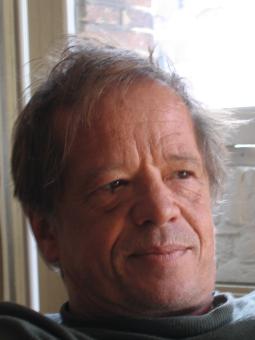|
|
|
Reinhard Blutner
Henk Zeevat |


Reinhard Blutner Henk Zeevat
blutner@uva.nl henk.zeevat@uva.nl
The course provides an overview of the main empirical background and the important techniques of optimality theoretic linguistics. In the first part a concise introduction into the basics of optimality theory (OT) is given including probabilistic variants of the standard theory. It is demonstrated that OT is not only restricted to the area of phonology but has important applications in syntax, semantics and pragmatics as well. In the second part we will discuss actual research topics such as OT pragmatics, OT syntax, bidirectional OT and its relation to (evolutionary) game theory, applications to language acquisition, language change and language evolution, computational aspects of OT, the relation between stochastic OT and other probabilistic models of language, OT and connectionism, non-linguistic topics: OT in music theory, ethics, and Greek poetical metre.
Content of the first part (with exercises)
(1) Introduction & Phonology 1.
Ex. 3,4
(2)
Phonology 2 & Computational
aspects of OT.
Ex. 9-11
(3) OT
syntax
Ex. 19, 20, and either 21 or 22
(4) OT
learning theories.
Ex. 14,15, and 17
(5) OT
semantics/pragmatics.
Ex. 23, 24
(6) Open issues. Discussing the further
programme
All the course material in one big pdf-file: click here.
September 26: Test
Content of the second part (Depending of the interests of the students a selection has to be made)
Topics for presentations and essays
(1)
Syntax:
a. Joan Bresnan:
Optimal Syntax (1998)
b. Judith Aissen:
Differential Object Marking: Iconicity vs. Economy
(2000)
c. Hanjung Lee:
Markedness and Word Order Freezing (2001)
(2) Computational issues:
a. Lauri Karttunen:
The proper treatment of optimality in computational
phonology (1998)
b. Henk Zeevat:
Constructive
Optimality Theory (2008)
(3) Bidirectional OT
a. Reinhard Blutner:
Some aspects of optimality in natural
language interpretation. (1998)
b. David I. Beaver and Hanjung Lee:
Input-Output Mismatches in OT (2003)
c. Paul Dekker & Robert van Rooy:
Bi-Directional Optimality Theory: An Application of Game Theory
(1999)
d. Gerhard Jäger:
Some Notes on the Formal Properties of Bidirectional Optimality Theory
(2000)
e. Reinhard Blutner:
Bidirectional grammar and bidirectional optimization (2008)
(4) Pragmatics in OT
a. Petra Hendriks & Helen
de Hoop: Optimality Theoretic Semantics (1999)
b. Henk Zeevat:
The Asymmetry of Optimality Theoretic Syntax and
Semantics (2000)
b. Henk Zeevat:
Where is
pragmatics in OT? (2008)
(5) Language acquisition and language performance
a. Paul
Smolensky: On the
Comprehension/Production Dilemma in Child Language (1996)
b. Petra Hendriks & Jennifer
Spenader: When production
precedes comprehension: An optimization approach to the acquisition of pronouns
(2005/2006)
c. Reinhard Blutner:
Some
experimental aspects of optimality-theoretic pragmatics
(2008)
(6) Language change and language evolution
a. Paul Boersma & Bruce Hayes: Empirical Tests of the Gradual Learning Algorithm
(1999)
b. Gerhard Jäger:
Learning Constraint Subhierarchies: The
Bidirectional Gradual Learning Algorithm (2003)
(7) OT and connectionism
a. Joe Pater, Rajesh Bhatt, & Christopher Potts:
Linguistic Optimization
(2007)
b. Alan Prince & Paul SmolenskyOptimality:
From Neural Networks to
Universal Grammar (1997)
c. Reinhard Blutner:
Neural Networks,
Penalty Logic and Optimality Theory (2005)
(8) Other
applications: Music/poetry/ethics
a. Dicky Gilbers and Maartje
Schreuder: Language and music in
optimality theory (2002)
Sybrand van
der Werf & Petra Hendriks:
A
constraint-based approach to grouping in language and music (2004)
b. Chris Golston & Tomas Riad:
The phonology of Classical Greek meter (2000).
c. Steve and Mónica Parker:
Optimality Theory and
Ethical Decision Making (2004)
Exercises (20%)
Written test (30%)
Term paper and presentation (50%).